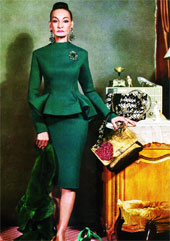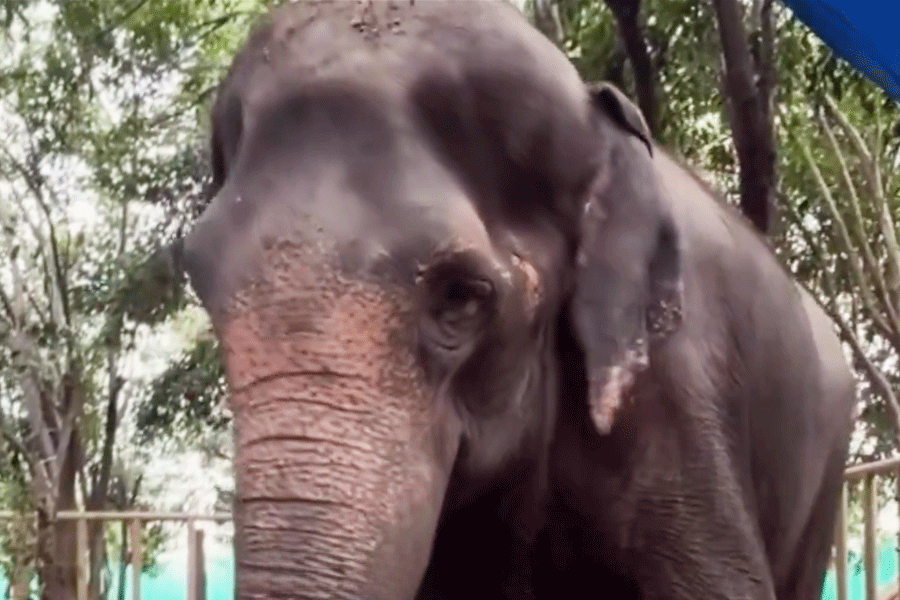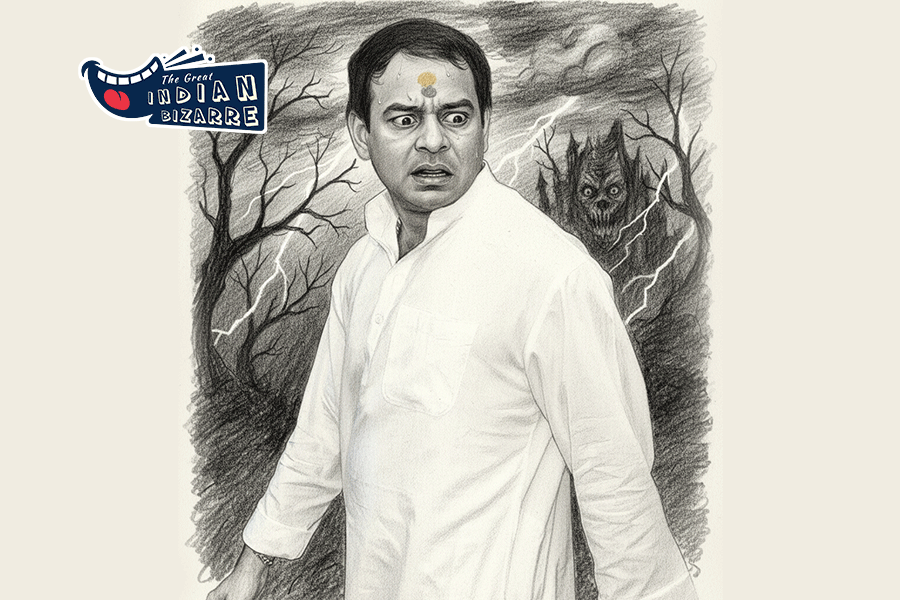
Sometimes a fashion show teases your senses long after you have walked out of it, with its music, the sets and the sheer beauty of the clothes. Gaurang Shah’s show at the Lakme Fashion Week Winter/Festive 2017 — the unveiling of his Chitravali collection — had that kind of an effect. And he picked it up from where he had left off at Lakme Fashion Week Summer/Resort 2018, with Neel, a collection rich in weaves and crafts from across India, bound by the shade of indigo.
Old Bollywood romantic classics being sung live on the stage, a kathak dancer performing along with the models walking in a languid pace... the runway at Jio Gardens in Mumbai came alive.
Post-show, the Hyderabad-based designer traced his journey — which started at his father’s blouse shop and blossomed into a network of weavers and stores across India — for t2oS. Over to Gaurang Shah...
HOW I GOT INTO WORKING WITH INDIAN WEAVES
My father had a blouse shop and I used to go and help him with it after school since I was a kid. The various kinds of fabrics interested me and after college I joined his business. In 1999 I started my own business of fabrics and saris. I identified a weaver in Uppada village in Andhra Pradesh who would weave the saris for me.
When my first pieces from Uppada came in the year 2001, it was difficult for people to understand what I have made. This was something very new. It took me almost a year to make people understand what I was making. And once they started wearing the saris, there was no looking back.
Slowly I started innovating with the traditional weaves and started giving him my own designs. First it was Uppada and then I did Kota, then Benaras. I have explored most of what India has to offer in terms of weaves and crafts, having done every type of weaving from every state I am working in.
In terms of surface textures, I have used every type of embroidery, from Kashmiri to Parsi gara to chikankari, to Kutch embroidery, mirrorwork, kalamkari hand-painted, block-printing, bandhni, shibori, ajrakh, daboo… and all of these are done on woven saris. Even the chikankari and Parsi gara I do are on handwoven saris.
The one state I wanted to explore but couldn’t is Odisha. The weavers are not ready to change to what I want; they are not ready to change the texture of the fabrics, the colours, the designs, their borders.... But there’s a lot more to explore in India, we have enough for a whole lifetime. I am still good for next 20 years.

HOW I GOT WEAVERS IN SOUTH TO DO THE JAMDANI
The jamdani is a very versatile technique of weaving. I have been doing jamdani for the last 10-12 years. I can change very inch of design in that; the jamdani technique of weaving is what I follow with all my weavers.
People think jamdani happens only in Bengal, but jamdani is woven in many states now. In Uppada village in Andhra Pradesh, where I started my career in saris, they do the jamdani technique of weaving, and they have been doing it since a long time. They don’t use jacquard or machinery. They do it on very simple plain loom, it’s the same technique as the Bangladeshi jamdani.
The jamdani technique started from Bangladesh then went to West Bengal and it spread all over India. We do jamdani weaves in Kota, Benaras, in Himachal Pradesh, in Andhra. I have pushed my kanjeevaram weavers also to learn the jamdani weave, so we also do a combination of jacquard and jamdani.
WHY I FIND KHADI VERSATILE
My association with khadi started in a village called Ponduru, near Visakhapatnam. They have traditionally woven only khadi fabric and saris. A weaver came to me in 2004, asking for some work. They used to do very simple saris that used to retail for, say, Rs 800-900. I gave them some design inputs and started working with them. I found the khadi fabric very versatile — you can wear it in summer, you can wear it in winter, it doesn’t get crushed, you can do your surface texturing on it, you can do dyeing, printing, you can do bandhni, you can do embroidery. You can do everything.

HOW I GO ABOUT WORKING WITH THE WEAVERS
When I start with a new weaver, I give him my design. The first thing to do is to convince him to do it, because my designs are very difficult. I do lots of texturing, I do lot of mix-matching in them, so it’s very difficult for the weavers. But once they start working for me, there’s no looking back.
I never restrict them ki yeh design lo, itni paisa denge, itni hi time mein karna hai. I say this is the design I am giving you, you take your time and do it exactly the way I want it, money wise you charge whatever you think is right for the work, because my customer is giving me what I am demanding, so they don’t have any restrictions.
There are around 800 weavers all over India and more than 4,000 craftsmen working with me. You should go to the villages and see how their life has changed since they started working for me.
HOW I BECAME A DESIGNER FROM A SARI BUSINESSMAN
After I started in 1999, I was into my full-time fabrics and saris business. In 2010 I opened my first store in Bombay and that was the time when the ‘designer’ tag became the ‘in’ thing. Everyone coming to me would ask for ‘designer saris’. And when I showed them my handwoven saris, they were like ‘yeh designer nahin hain, we want designer’. For people, ‘designer’ meant showcasing at fashion weeks, showcasing embroidered saris and that was embroidered saris ka peak time.
So to make myself a ‘designer’, I had to start doing fashion weeks. My first show was at Lakme Fashion Week in 2012. And I was perhaps the first one to have showcased a handwoven sari on the ramp. LFW is the best platform for any upcoming designer.
I did the Berlin Fashion Week (in 2012), I do a lot of international exhibitions, but there, also, I only sell my saris. I have a store in New Jersey and I am on the verge of opening a store in London and Dubai and three to four more stores in the US by next year. The clientele there is only Indians. I get foreigners who appreciate a lot, but since they don’t wear saris, they don’t buy.

HOW I CREATE A STORY WITH EVERY SHOW
I conceptualise the whole show around three months in advance, when my clothes start getting made. It is about the whole atmosphere that I am creating. For me, the show is 50 per cent clothes and 50 per cent music. Every show of mine that you see, the music and the clothes will blend into each other. I create a story. What you are seeing on the ramp, what you are listening to, are a part of me.
Till now I have done 13 shows at Lakme Fashion Week; I have used 13 different types of music and all of it is what I listen to. If I do Western, it has to be classical Western. So with each show, one portion of my personality will be reflected, through the clothes, the music, the whole set-up that I do.
Gaurang is a good friend and I really like his work. He works in the crafts space and he really knows his crafts... he is very confident and comfortable in his space.
— Anamika Khanna
Ramp pictures: Sandip Das











